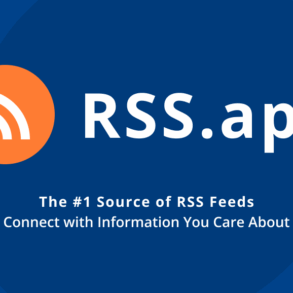
In the quiet scroll of a late-night feed, Ayaan and Mira found each other—not at a party or a café, but on a now-forgotten social media platform. What began as a comment on a shared post became long conversations about music, films, childhood dreams, and everything in between. The platform’s quirky features—custom emojis, daily status prompts, and community walls—offered them a shared digital space to grow closer. They were miles apart in reality yet emotionally tethered by algorithms and chats. In many ways, their story wasn’t unique—but it was real and deeply shaped by the connective power of social media.
Social media has become more than just an outlet for expression—it is often the place where people find community, purpose, even love. Platforms today are woven into the fabric of daily life, shaping careers, friendships, activism, and relationships. Emotional investments run deep. According to Statista, as of 2024, people globally spent an average of 2 hours and 31 minutes per day on social media. But what happens when that space, so intrinsic to people’s emotional wellbeing, suddenly vanishes? For Ayaan and Mira, it happened on a quiet Tuesday morning. They tried logging in only to find an error page. No warning. No goodbyes. Just gone. What followed was not just the loss of a platform—it was the loss of memories, messages, and milestones that had no physical backup. It was a digital heartbreak.
This emotional ripple has echoed across the world each time a social platform shuts down. Platforms like Google+, Orkut, Yahoo Messenger, Hike, MSN Messenger, Friendster, and recently, Skype, have all seen their final logouts. Orkut, once the darling of Indian and Brazilian youth, shut down in 2014 due to low engagement and shifting user behavior. Google+, Google’s ambitious but short-lived social network, met its end in 2019 after a major security flaw and low user interaction—despite having over 200 million registered users. Yahoo Messenger, a pioneer in online chatting from the late ’90s, officially shut down in 2018 due to dwindling relevance in the smartphone era. Hike Messenger, India’s answer to WhatsApp with unique features like stickers and hidden chats, shut down in 2021 as it failed to keep up with changing user preferences. Each of these closures left millions of users disconnected, not just from a platform but from pieces of their pasts, reminding us that even in the permanence of the internet, nothing is forever.
This article delves into the stories of several notable platforms, exploring the reasons behind their decline and the lessons they offer.
Skype
Launched in 2003, Skype revolutionized communication by offering free voice and video calls over the internet. At its peak in 2011, it boasted over 400 million users and accounted for 8% of all international calling. Microsoft acquired Skype in 2011 for $8.5 billion, aiming to integrate it into its suite of services.
However, Skype’s decline began as it struggled to adapt to the mobile-first era. Its peer-to-peer architecture, once a strength, became a liability in the face of mobile platforms. Competitors like Zoom, WhatsApp, and Microsoft Teams offered more seamless experiences. By 2025, Skype’s user base had dwindled to 23 million monthly users. Microsoft officially shut down Skype on May 5, 2025, redirecting users to Teams.
Key Takeaways:
- Adaptability is Crucial: Technological advancements necessitate continuous innovation.
- User Experience Matters: A cumbersome interface can drive users to more intuitive alternatives.
Google+: Ambition Undermined by Engagement Issues
Google+ was launched in 2011 as Google’s answer to Facebook. Despite integrating with other Google services, it failed to gain significant traction. By 2019, it had 200 million users, but 90% of sessions lasted less than five seconds, indicating low engagement.
A significant blow came in 2018 when a software flaw potentially exposed the personal information of 52.5 million users. This breach, coupled with declining usage, led to the shutdown of Google+ for personal and brand accounts on April 2, 2019.
Key Takeaways:
- User Engagement is Vital: High user numbers mean little without active participation.
- Security is Paramount: Data breaches can irreparably damage user trust.
Bebo
Bebo, launched in 2005, quickly gained popularity, especially in the UK. AOL acquired it in 2008 for $850 million, but the platform couldn’t sustain its growth. After filing for bankruptcy in 2013, Bebo underwent several revivals, including a brief stint as a streaming platform under Amazon’s Twitch.
Despite these efforts, Bebo couldn’t recapture its former glory. Its final attempt to relaunch in 2021 ended in May 2022, never progressing beyond beta testing.
Key Takeaways:
- Brand Recognition Isn’t Enough: Past success doesn’t guarantee future relevance.
- Understanding User Needs is Crucial: Platforms must evolve with user expectations.
Friendster
Friendster, launched in 2003, was one of the first social networking platforms. It gained significant traction in Asia, with over 115 million registered users by 2011. However, technical issues and the rise of competitors like Facebook led to its decline.
In an attempt to reinvent itself, Friendster transitioned to a social gaming platform in 2011. This pivot failed to resonate with users, leading to its shutdown in 2015.
Key Takeaways:
- Technical Stability is Fundamental: Performance issues can drive users away.
- Pivoting Requires Strategic Alignment: Shifting focus must align with user interests and market trends.
Meez: A Niche Platform That Couldn’t Scale
Meez, launched in 2006, offered a virtual world where users could create 3D avatars and interact in themed environments. It attracted over 13 million registered users, primarily in the United States.
Despite its unique offering, Meez struggled to maintain user engagement and monetize effectively. The platform was discontinued in December 2017.
Key Takeaways:
- Niche Appeal Limits Growth: Platforms must find ways to broaden their appeal to sustain growth.
- Monetization Strategies are Essential: Without
Hike Messenger
Hike Messenger, launched in 2012, was an Indian messaging app that offered features like stickers and offline messaging. At its height, it had over 100 million registered users and was valued at $1.4 billion.
Despite its initial success, Hike faced hurdles:
- Intense Competition: Global giants like WhatsApp dominated the messaging space, making it difficult for Hike to maintain its user base.
- Feature Overlap: Many of Hike’s unique features were replicated by competitors, reducing its differentiation.
Hike Messenger was discontinued on January 6, 2021
hi5
Launched in 2003 by Ramu Yalamanchi, hi5 quickly became a prominent social networking site, especially in Latin America, Europe, and Asia. At its peak, it boasted over 70 million registered users and was ranked among the world’s top ten websites. However, as social media evolved, hi5 faced intense competition from platforms like Facebook and MySpace. Despite an initial surge in popularity, hi5 struggled to keep pace with these emerging giants. The financial crisis of 2008 exacerbated these challenges, leading hi5 to pivot from a traditional social networking site to focus on virtual goods and social gaming.
In 2010, hi5 made a major shift, incorporating social gaming features and virtual currency to enhance user engagement. The introduction of games and a developer platform aimed to attract users and capitalize on trends popularized by Facebook. Nevertheless, as users flocked to newer platforms like Instagram, hi5’s growth stagnated. In 2011, hi5 was acquired by Tagged, and both were later purchased by The Meet Group in 2017.
Key Takeaways:
- Adaptation is Key: Pivoting strategies must align with user interests and market trends.
- Sustainable Growth Requires Innovation: Continuous innovation is essential to maintain user engagement and platform relevance.
Ibibo Messenger
Ibibo Messenger was part of the Ibibo Group’s suite of products, aiming to provide a comprehensive social networking and messaging experience. Despite initial efforts, the platform struggled with technical issues and failed to gain significant traction in the competitive messaging app market. Users reported frequent crashes and errors, leading to a decline in user satisfaction. Additionally, the platform couldn’t keep up with the rapid advancements and features offered by competitors like WhatsApp and Facebook Messenger. Eventually, Ibibo Messenger was discontinued, and the Ibibo Group shifted its focus to other ventures, including online travel services.
Key Takeaways:
- Technical Reliability is Crucial: Frequent issues can erode user trust and lead to attrition.
- Competitive Differentiation is Necessary: In a saturated market, unique value propositions are essential to stand out.
The rise and fall of digital platforms highlight the fast-paced, ever-evolving nature of the social media landscape. Success demands more than innovation, calls for adaptability, technical reliability, and an intimate grasp of user needs. As technology advances, platforms must stay agile and user-centric to endure the fierce competition.
Amid this shifting terrain, Mira and Ayaan’s story stands out. Months after their favorite platform vanished, fate nudged them together on a new one. A mutual follow, a familiar emoji, and a shared memory reignited what they thought was lost. Their connection, once digital, soon deepened into something real.
No longer bound by timelines or profile pictures, they began preserving memories in tangible ways—rather than scraps, testimonials or exchange of photos and so on. What started as a fleeting social media platform-based bond evolved into a resilient story.
Today, Mira and Ayaan often laugh recounting how a disappeared app almost ended them, and how another helped them begin anew. Their journey is a testament to the emotional architecture quietly built on social platforms—and a reminder that apps may vanish
Disclaimer: The views expressed in this article are those of the author/authors and do not necessarily reflect the views of ET Edge Insights, its management, or its members
This post was originally published on this site be sure to check out more of their content




